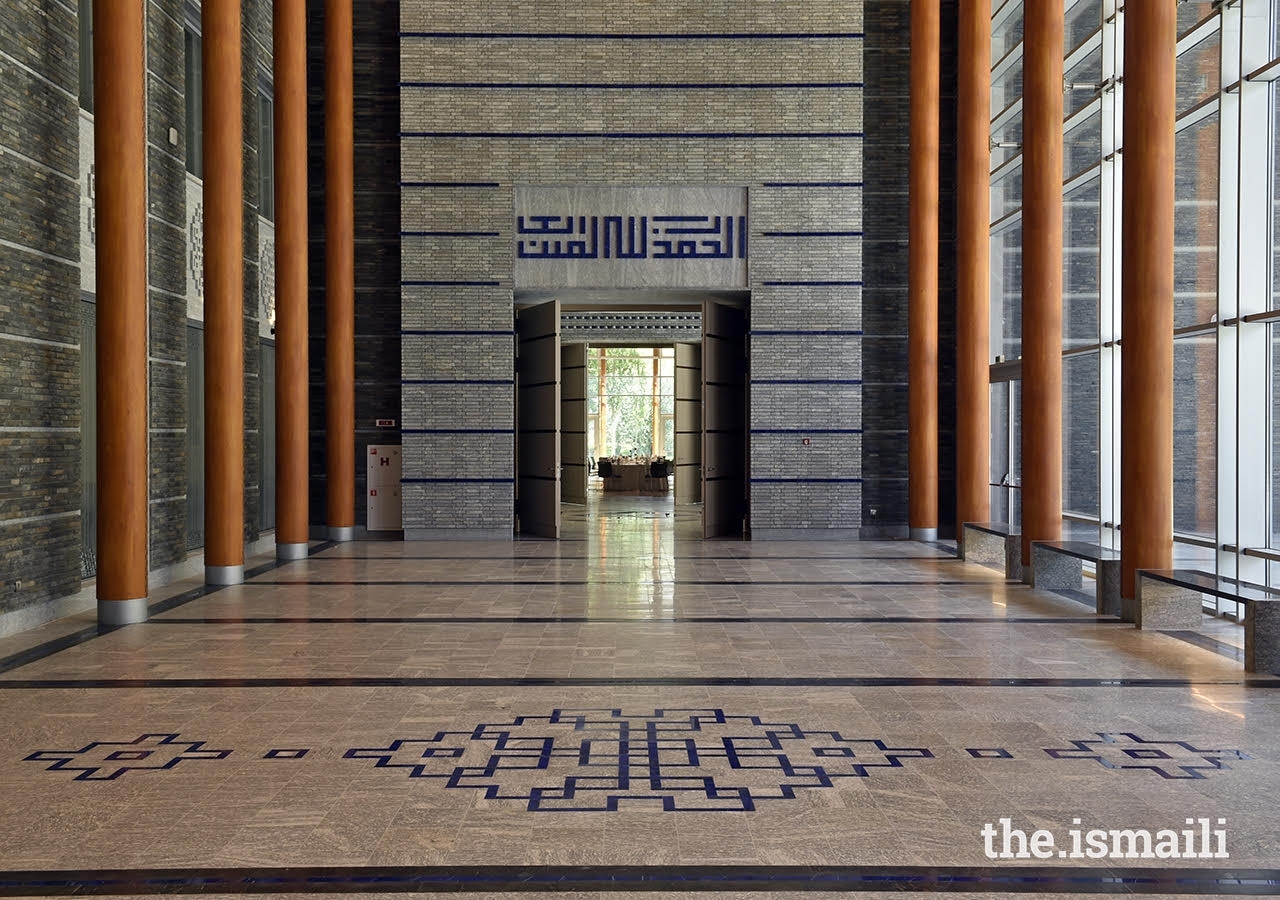At the Foundation Ceremony of the Ismaili Centre, Dushanbe in 2003, Mawlana Hazar Imam said:
Bequeathing a legacy, that to this day enlightens the region’s intellectual traditions, Nasir Khusraw was among the premier thinkers whose contributions will be celebrated in the space that we initiate today. The passage of a millennium has not diminished Nasir Khusraw’s relevance nor dulled the luster of his poetry. It continues to uplift and inspire, reminding us that we are the authors of our own destiny.2
In the one thousand years since the time of Nasir-i Khusraw, the Ismaili Jamat of Badakhshan has continued to spread and thrive in this mountainous region, sometimes under extremely adverse conditions, marking their tradition as one of the oldest continuous Ismaili traditions. Yet, the story of how this Jamat has survived and maintained its traditions since the time of Nasir-i Khusraw is still very poorly understood. While a great deal of research has now been carried out on the figure of Nasir-i Khusraw and his works, there has been very little study on those figures who came after him, who transmitted his teachings, and led the Jamat in his footsteps.
Ghiyath al-Din ʿAli Isfahani, the fifteenth-century author and Ismaili missionary (dāʿī), is one such individual. His name suggests that his family originated from the city of Isfahan in Iran, although he appears to have spent most of his life within Badakhshan. Like many of the great Ismaili authors and dāʿīs of the past, such as Hasan-i Sabbah or Nasir-i Khusraw himself, Ghiyath al-Din was a convert to the Ismaili tariqah. He writes of how he encountered some verses of Nasir-i Khusraw in his youth that provided the answers to his long-sought questions about religion and that he later entered the daʿwa as a result.
Like Nasir-i Khusraw, Ghiyath al-Din was a prolific author and scholar who wrote many books during his lifetime, only some of which have survived down to the present. In fact, Ghiyath al-Din is the first Ismaili author we can identify by name who worked within the Badakhshan region after Nasir-i Khusraw.3 His most famous work is titled Sahifat al-nazirin, or Pages for the Reader. This book, which is also known in some copies under the title Si u shish sahifa, or Thirty-six Chapters, was written in 1453 CE and covers a wide range of topics concerning Ismaili doctrine and theology. Manuscripts of this and his other works are still preserved today among the Ismailis of Tajikistan and Afghanistan.4 Ghiyath al-Din wrote the Sahifat al-nazirin at a time when Badakhshan was under the rule of a local dynasty who was relatively tolerant towards the Ismailis. Yet the political stability enjoyed by the Ismailis in Badakhshan would soon deteriorate. In 1466, the region was conquered by the Timurids, a dynasty known for having severely persecuted Ismailis throughout their realm.5 During their rule in Badakhshan a number of massacres were carried out by the Timurids against Ismaili communities.
Ghiyath al-Din does not appear to have composed any more openly Ismaili works after the Timurid conquest of Badakhshan. Yet his scholarly career did not come to an end; to the contrary, Ghiyath al-Din continued to write books on an impressive array of topics, including geography, cosmology, astronomy, geology, and mathematics, and even works on falconry and culinary arts.6 In assessing his works, we can clearly see that Ghiyath al-Din was a polymath who epitomized the commitment to knowledge and the balance of the secular and religious sciences that has characterized the works of Ismaili authors throughout history. A number of Ghiyath al-Din’s later works are dedicated to the Timurid rulers of Badakhshan, suggesting that he received court patronage to continue his scholarship. Given the sharp hostility demonstrated by the Timurids towards the Ismailis, we can assume that Ghiyath al-Din was probably observing the practice of taqiyya, or precautionary concealment, which is a well-established tradition among Shiʿas that allows them to conceal their religious identity when under threat.
Yet there are also some clues to suggest that Ghiyath al-Din may have secretly continued his work for the daʿwa after the Timurid conquest, perhaps under a different name. Several copies of his Sahifat al-nazirin bear the name of a different author: Sayyid Suhrab Wali. In fact, the first copies of this work that became known to scholars in the early twentieth century, beginning with Wladimir Ivanow, bore the name of Sayyid Suhrab, leading many to assume that he was the original author, while the copies bearing the name of Ghiyath al-Din have only been discovered more recently.7
There are many stories that circulate about Sayyid Suhrab among the Ismailis of Badakhshan, which relate that he was a direct disciple of Nasir-i Khusraw and chosen by him to lead the Jamat after his death.8 Scholars for years have been perplexed as to how a figure who is claimed to be a contemporary of Nasir-i Khusraw in the eleventh century, could also be attributed the authorship of a fifteenth-century text. The fact that there exist copies of this same text bearing two different names suggests one interesting possibility: that these may be two different names for the same individual and that Ghiyath al-Din adopted the name of Sayyid Suhrab as an alias in order to continue his work for the Ismaili daʿwa after the Timurid conquest of Badakhshan. Given that Ghiyath al-Din’s own work demonstrates a great deal of influence from Nasir-i Khusraw, and that he credits the roots of his conversion to the writings of Nasir, it may have been the case that the intellectual and literary relationship between the two figures gradually morphed, in the oral traditions of the Ismailis, into the story of a master-disciple relationship between Nasir-i Khusraw and Sayyid Suhrab.
To date, much of the scholarship in the field of Ismaili Studies has focused on the writings of Ismaili authors from the Fatimid and Alamut eras, when prominent scholars such as Nasir-i Khusraw, Nasir al-Din Tusi, Hamid al-Din Kirmani and others wrote the classical works that continue to be studied by Ismailis today. While research on these works continues, it is equally important that we understand how this classical tradition of knowledge was maintained and developed in the centuries following the Mongol invasions. The life and works of Ghiyath al-Din exemplify many of the qualities that have allowed the Ismaili communities of Badakhshan to survive and even flourish during this period, despite the manifold challenges they faced, demonstrating how, in the words of Hazar Imam, Ismailis have remained the “authors of [their] own destiny” throughout history.
1This essay has been adapted from a forthcoming article to be published by the IIS: Daniel Beben, "The Ṣaḥīfat al-nāẓirīn: Reflections on Authorship and Confessional Identity in a Fifteenth-Century Central Asian Text," in Before the Printed Word: Texts, Scribes and Transmission, ed. Wafi Momin (London: I.B. Tauris and the Institute of Ismaili Studies, forthcoming).
2Speech at the Foundation Ceremony of the Ismaili Centre, Dushanbe click here
3For a survey of Ismaili history in Central Asia and Badakhshan see Daniel Beben, "The Ismaili in Central Asia," in The Oxford Research Encyclopedia of Asian History, ed. David Ludden (New York: Oxford University Press, 2018), available online at click here
4Several manuscripts of this text are maintained in the Persian manuscripts collection of the IIS. Several other copies are held at the Rudaki Institute of Oriental Studies in Dushanbe, Tajikistan, which were collected during a Soviet research expedition in Badakhshan in the early 1960s.
5On Timurid persecutions of the Ismailis see Shafique N. Virani, The Ismailis in the Middle Ages: A History of Survival, a Search for Salvation (Oxford: Oxford University Press, 2007).
6Manuscripts of Ghiyath al-Din’s other works are held in many different manuscript collections but thus far only one of them has been published, a text on astronomy titled Nujum. This has been published in a Cyrillic-script Tajiki edition as Ghiosuddin Alii Isfahonī, Nujum, ed. Umed Shohzodamuhammad (Khorogh: Meros, 1995). This text was still used among the Ismailis of Badakhshan for calendar reckoning down to the early Soviet era; on this see Karim-Aly Kassam, Umed Bulbulshoev, and Morgan Ruelle, "Ecology of Time: Calendar of the Human Body in the Pamir Mountains," Journal of Persianate Studies 4 (2011), 146-70.
7It was under the name of Sayyid Suhrab that Ivanow and his student Hushang Ujaqi published an edition of the text as Sī ū shish ṣaḥīfa, ed. Hūshang Ujāqī and Wladimir Ivanow (Tehran: Ismaili Society, 1961).
8These stories have circulated in both oral and written form among the Ismailis of Badakhshan. For a summary of these narratives, see Beben, "The Ṣaḥīfat al-nāẓirīn." There are also a number of families of religious leaders within Badakhshan today who claim descent from Sayyid Suhrab; see John Mock, "Shrine Traditions of Wakhan Afghanistan," Journal of Persianate Studies 4 (2011), 130.








